Ahead of her exhibition at Camden Arts Centre, Amy Sillman talks to Imelda Barnard about the comic impulse, landline phones, and her love/hate relationship with painting
You’re taking over all three gallery spaces at Camden Arts Centre for your solo show. What will the exhibition consist of?
It’s an exhibition of some recent and new works from 2016–18, including paintings, drawings and an animation. It’s a huge challenge to take over the whole space. I’ve made a new piece for Gallery 3, a large space that forced me to experiment. I’m not usually an installation artist and so I had to figure out how to approach something with a particular architecture in mind. The gallery will feature 12 or more double-sided printed and drawn works which the viewer will walk around and which are hung from a wire like a clothes line – each side has its own kind of language.
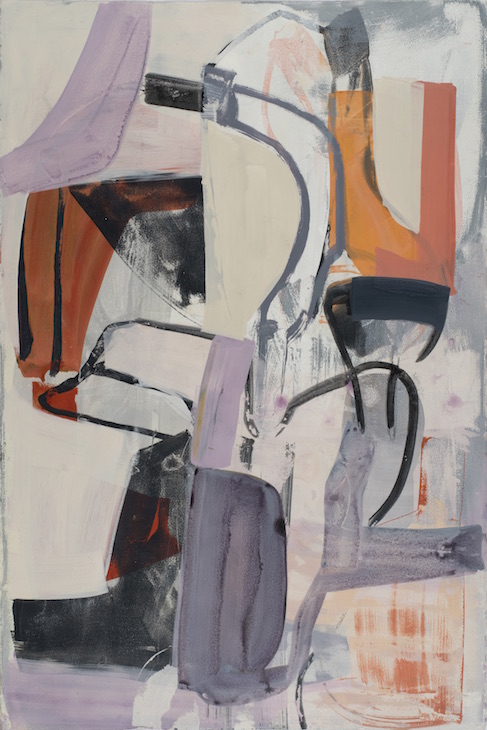
Dubstamp (one from a sequence of 30 double-sided pieces) (2018), Amy Sillman. Photo: John Berens; courtesy the artist
Why did you choose ‘Landline’ as the title of the exhibition?
It came from thinking how much I prefer talking to people on my landline. It’s an obsolete technology; young people often don’t have landlines. It reminds me of painting. I feel like sometimes I’m working with this form that is nearly obsolete and which has this very clear, communicative purpose but which somehow we’ve surpassed and altered.
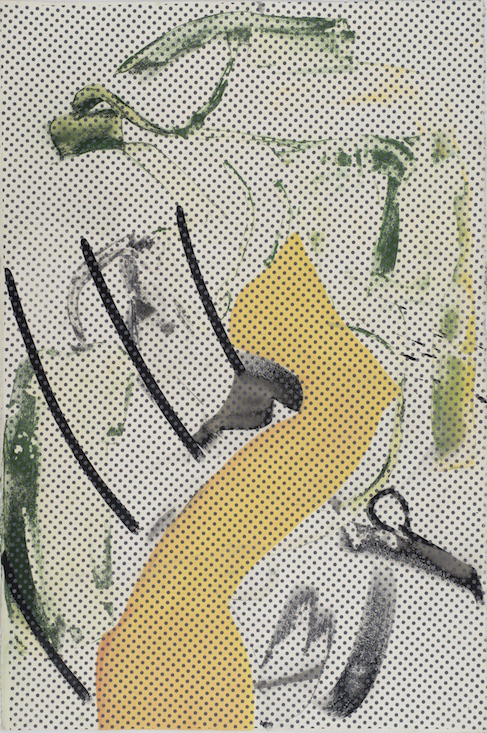
Dub Stamp (one from a sequence of 30 double-sided pieces) (2018), Amy Sillman. Photo: John Berens; courtesy the artist
Are you working against painting?
I feel like I’m working with and against it equally. The piece I’m making for Gallery 3 is structurally ambivalent, it has two sides that are printed on the same sheet of paper, like two sides of a coin. I realised that I find new ways to understand my love/hate relationship with painting. I’m always working against what I feel to be a force or a form that I deeply love. But I understand that painting has got its own structural limitations that mean that it could end. There are aspects of the painting process that don’t really make sense and I can see them as antique. But painters are always proclaiming how much painting goes on and that’s true too.
Your abstract paintings are often shown alongside jokes and Xeroxed zines. fHow do these elements work together?
A lot of that started while living in Berlin in 2009. I started making jokes and cartoons to amuse myself in a foreign context. I have a long relationship with humour and the comic, but I think it came to the fore because when you live in a foreign country and you’re not very good at the language, you can’t make jokes. I realised that these experiments were not inconsistent with my approach to painting; I started to include them in painting shows as a kind of levelling process. I liked the combination and realised that you could make an interesting move in relation to painting by displaying something alongside that seemed out of place.
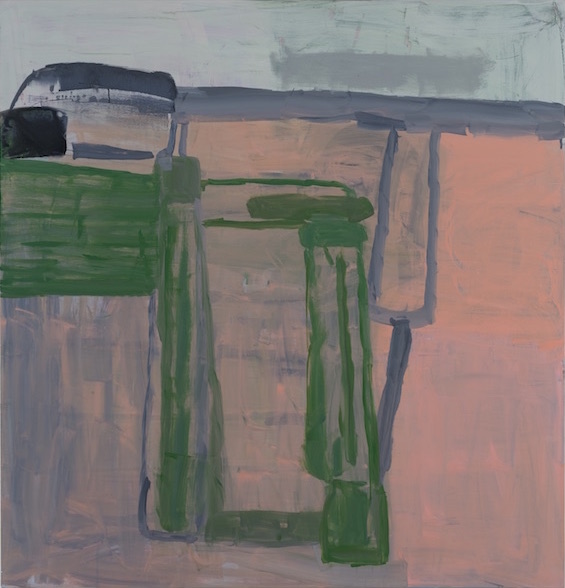
Pink ground, face down (2017), Amy Sillman. Private collection; photo: John Berens; courtesy the artist and Capitain Petzel, Berlin
Is the humour and playfulness in your work an attempt to counter the apparent seriousness of painting?
Yes. I learned to look at painting in a very serious way and I take painting really seriously; I’m not making jokes about painting. The high modernist painter is not very funny. There are, of course, many outstanding exceptions to the rule, like Ad Reinhardt or Philip Guston. The comic impulse or the satiric is seen as anti painting, in opposition to high modernism. These painters are great modernists and they’re funny and yet they don’t quite fit neatly into art history. There have been many funny artists in contemporary art, like Sigmar Polke, Martin Kippenberger, Lee Lozano, and others, whose humour makes their work more difficult to get a grasp on, to categorise or pin down. I’m interested in that awkwardness.
How do you understand colour and its function in your work?
I’ve tried to read everything that’s ever been written about colour. I don’t ‘think’ about colour, but I understand it as an interesting force. And then all that goes out the window when I’m working – I’m a colourist. It’s not like something I’m trying to achieve but something I can’t get rid of. I would like to get rid of it; I go through periods every few years where I only work in black and white.

Untitled (Logs) (2018), Amy Sillman. Photo: John Berens; courtesy the artist and Gladstone Gallery, New York & Brussels
Do you think of yourself as working in an Abstract Expressionist tradition?
I was taught by old Ab-Ex guys early on when I was a freshman in college and I learned a lot in terms of process and method. I understood what it means to make work that forces you to improvise. But I’ve also learned a lot from other people not in my field – dancers, film-makers, poets and musicians – about what it means to work on the spur of the moment, with your nerve and your instincts. It was shocking to me to understand over the years how male Ab-Ex is supposed to be. It’s a real erasure and makes invisible the efforts and achievements of a generation of women who worked within the terms of gestural painting. It’s an art history problem, not a painting problem. But I’ve tried to really approach the field of Abstract Expressionism critically, with a negation of the negation.
How does your feminism relate to your work?
I think I’m partly a feminist and partly just a discontent, a person with a political sense of anger and suspicion and curiosity. I try to look at the gaps and not overlook the work of people who’ve been buried because of sexism and racism. And I don’t buy into the cliché of what the artist is supposed to be doing and thinking. So I don’t hibernate in my studio, I don’t work in an ivory tower, and I would say that I think in a way that’s queer – in a very complex, non-binary, structurally ambivalent way.
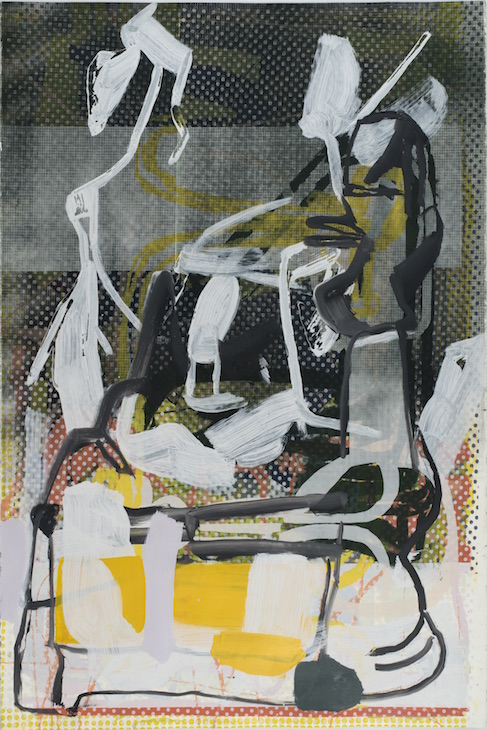
Dub Stamp (one from a sequence of 30 double-sided pieces) (2018), Amy Sillman. Photo: John Berens; courtesy the artist
Your works seem to resist finality. How do you know when a painting is finished?
It’s pure, endless overwork. I went to a lecture on Duchamp’s readymades and
I realised that his insistence on hiding the amount that you work and hinging everything on a beautiful moment, or a joke, is what I’ve been doing for years. No one sees most of what I do because I paint it out. That’s why I became interested in animation because you could see those constant changes rather than hiding them. There’s no way to know when a painting is finished. I was talking to my art dealer about this and she said: ‘I knew de Kooning. He also painted and painted and painted and somebody asked him how do you know when you’re done? And he said, when they take it away from you!’
‘Amy Sillman: Landline’ is at Camden Arts Centre from 28 September–6 January 2019.
From the September issue of Apollo. Preview and subscribe here.
Unlimited access from just $16 every 3 months
Subscribe to get unlimited and exclusive access to the top art stories, interviews and exhibition reviews.


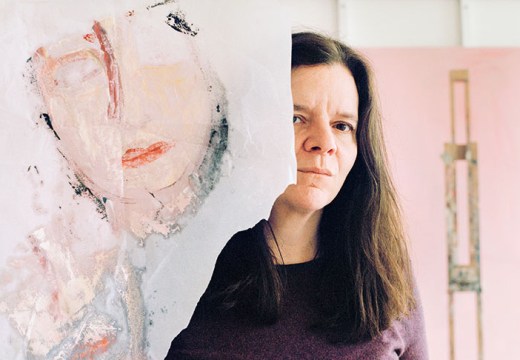
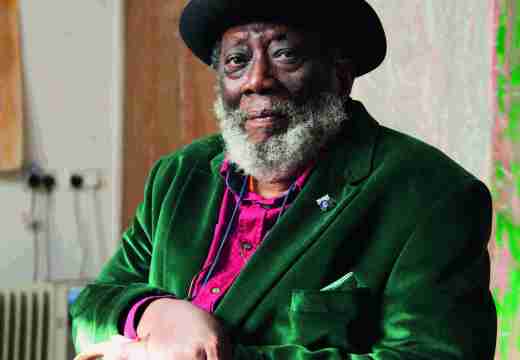
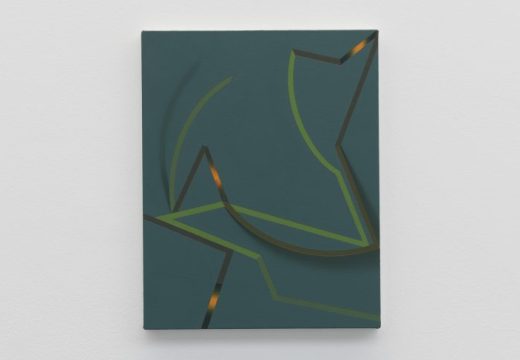









![Masterpiece [Re]discovery 2022. Photo: Ben Fisher Photography, courtesy of Masterpiece London](http://www.apollo-magazine.com/wp-content/uploads/2022/07/MPL2022_4263.jpg)
It’s time for the government of London to return to its rightful home